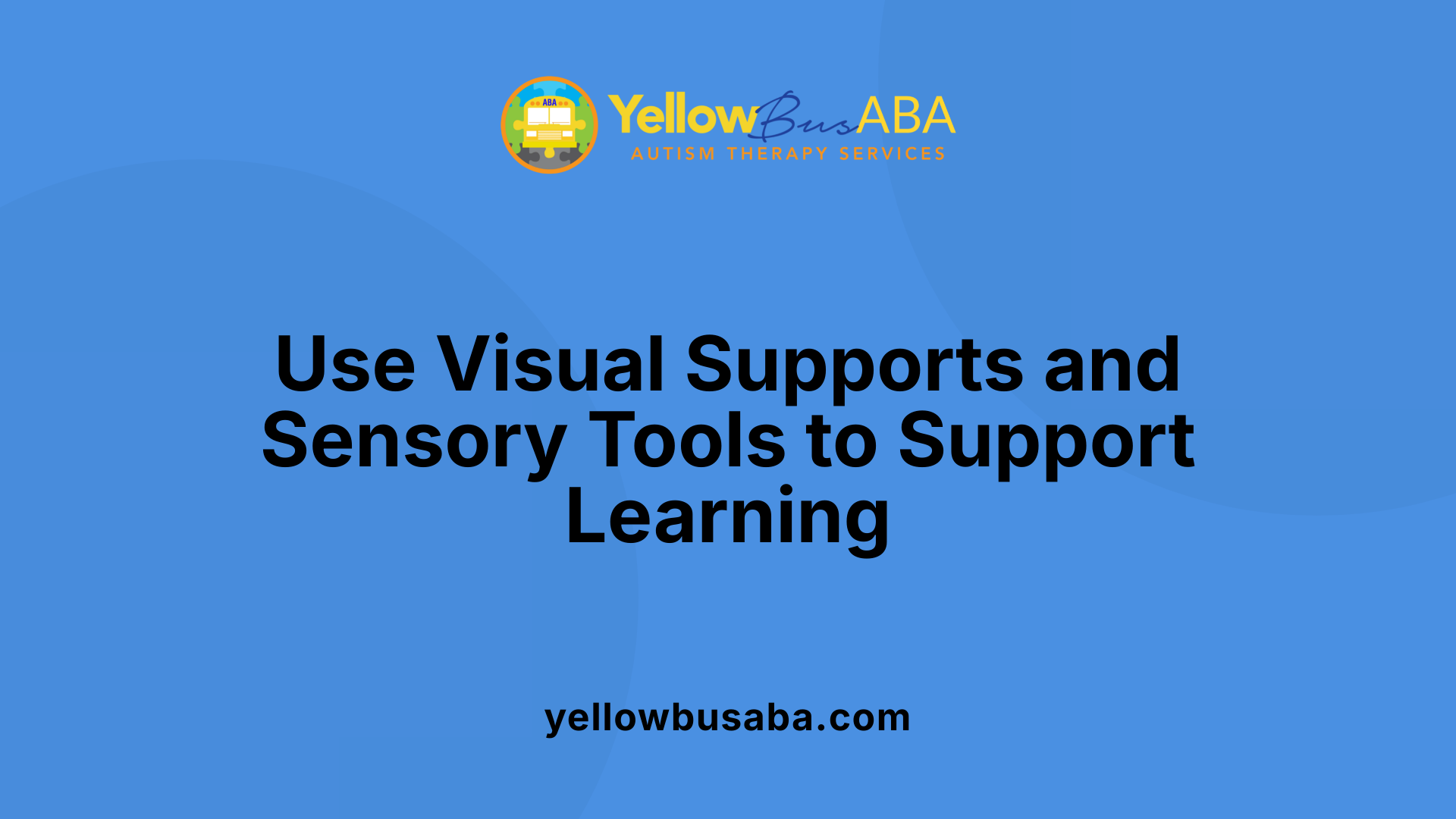Understanding the Importance of a Structured Environment in ABA Therapy
A well-structured environment is vital for children with autism to thrive within ABA therapy. It provides a safe, predictable setting that fosters independence, reduces anxiety, and promotes social and behavioral development. This article explores key strategies for creating, organizing, and maintaining an environment conducive to effective therapy and daily functioning.
Defining a Structured Environment for Children with Autism

What constitutes a structured environment for children with autism?
A structured environment for children with autism is designed to create a safe, predictable, and supportive setting that helps reduce stress and enhance learning. It involves organizing both the physical space and daily routines to foster independence and cooperation.
Components including physical space, routines, and visual supports
The physical environment plays a crucial role. It should include a designated calm and clutter-free area where children can retreat if they feel overwhelmed. Keeping rooms well-organized and avoiding frequent changes in furniture or layout help children feel secure.
Routines are another essential element. Consistent wake times, meals, and bedtimes create familiarity. Using visual schedules and checklists makes daily tasks predictable and easy to follow. Planning ahead and giving children advance notice about any changes help them adapt better.
Visual supports like communication boards, picture cards, and symbols provide visual cues that reinforce routines and aid communication. These tools help children understand transitions and expectations, reducing anxiety and promoting independence.
Creating calm environments to minimize sensory overload is also vital. Soft lighting, minimizing loud sounds, and providing sensory items such as weighted blankets and fidget toys aid emotional regulation.
Ultimately, combining these elements—organized physical space, consistent routines, and visual supports—creates a nurturing environment. This setup promotes safety, encourages social interaction, and supports children in managing their emotions and behaviors effectively.
Organizing Physical Space to Maximize Focus and Comfort
 Creating an effective physical environment is crucial for children with autism, especially when implementing ABA strategies. A calm, organized, and accessible space helps reduce sensory overload and supports learning.
Creating an effective physical environment is crucial for children with autism, especially when implementing ABA strategies. A calm, organized, and accessible space helps reduce sensory overload and supports learning.
Designing Calming, Clutter-Free Learning Areas A dedicated learning zone should be quiet and minimally cluttered. Soft colors, appropriate lighting, and sound control create a soothing environment. Keep this area free from unnecessary distractions to help the child focus during structured tasks.
Accessibility of Materials and Resources All sensory tools, therapy materials, and daily activity resources should be stored in easily accessible containers. Label shelves with pictures or words to guide children in independently choosing their tools or activities. This promotes autonomy and keeps the space organized.
Designating Specific Zones for Different Activities Divide the room into designated areas, such as a learning corner, sensory zone, and a calming retreat. Each zone should have clear visual cues and be equipped with relevant items. This arrangement helps children understand routines, move smoothly between activities, and feel in control.
Supporting Routines and Transitions Visual schedules and checklists displayed prominently assist children in understanding daily routines and upcoming transitions. Practice runs before new activities build familiarity and reduce anxiety. When disruptions happen, being patient, communicating openly, and providing visual or tactile cues can ease transitions.
| Aspect | Details | Purpose |
|---|---|---|
| Clutter-Free Environment | Keep the space tidy, organize materials with labels | Minimize distractions, aid focus |
| Visual Supports | Use picture cards, checklists, and social stories | Support communication and routine understanding |
| Designated Activity Zones | Create specific areas for learning, sensory play, and calming | Enhance structure and predictability |
| Sensory-Friendly Design | Use soft lighting, sensory tools like weighted blankets | Manage sensory sensitivities |
Establishing a structured environment involves a thoughtful layout, consistent routines, and an understanding of each child's sensory needs. By doing so, families and therapists can foster a space that promotes comfort, focus, and positive developmental outcomes.
Incorporating Visual Supports and Sensory Strategies

What strategies can be used to establish routines and structure for children with autism?
Creating a predictable environment helps children with autism feel safe and manage anxiety. Visual cues like communication boards, picture cards, and social stories are effective tools. These supports help children understand daily expectations and transitions, easing their experience of change.
A dedicated quiet space offers a calm retreat where children can self-regulate. Filling this space with sensory items such as weighted blankets, fidget toys, and soft lighting creates a soothing environment. These sensory tools help reduce sensory overload and promote relaxation.
Reducing sensory input in the environment is also crucial. Keep rooms organized and clutter-free, minimize loud noises, and use soft lighting to prevent overwhelming sensory experiences. These adjustments improve focus and comfort during structured activities.
Establishing routines involves consistent wake, meal, and bedtime schedules. Using visual aids like checklists and timers helps children anticipate transitions and feel more in control. Involving children in planning routines and offering choices fosters independence.
When unpredictable events occur, patience and open communication are vital. Explaining changes, making worry lists, and highlighting positive aspects help children adapt and manage stress better.
Regular assessment and adjustment of routines ensure they stay aligned with the child's changing needs. These strategies build a sense of security, reduce anxiety, and support learning and development.
Implementing Positive Reinforcement and Encouraging Communication
 Creating a supportive environment for children with autism involves not only structured routines and spaces but also techniques that promote emotional security and communication skills.
Creating a supportive environment for children with autism involves not only structured routines and spaces but also techniques that promote emotional security and communication skills.
One effective method is the use of positive reinforcement. Children respond well when their desired behaviors are praised and rewarded. Celebrating small achievements motivates continued effort and helps build confidence. For example, praising a child for successfully requesting a toy or completing a task encourages repetition of these behaviors. Rewards, whether verbal praise or tangible items, serve as additional motivation, fostering a positive learning atmosphere.
Supporting communication is equally important. Visual supports such as communication boards or picture cards can help children express their needs and desires when verbal communication is challenging. These tools provide visual cues that make requesting or commenting easier for children. Promoting the use of these supports during daily activities encourages independence and reduces frustration.
Encouragement of verbal requests further enhances communication skills. During structured and unstructured activities, caregivers can prompt children to use words instead of gestures or gestures. For example, when a child wants a snack, guiding them to say "breakfast" instead of just reaching can reinforce verbal interaction. Consistent practice and positive reinforcement for using words help children develop conversation skills and confidence in communication.
When designing an ABA therapy session, structuring it around clear goals and individualized plans is essential. Sessions usually start with activities that build rapport, then progress into targeted skill development such as communication or socialization. Using evidence-based techniques, offering consistent positive reinforcement, and collecting data on progress create an effective, engaging routine. Additionally, providing a calm, predictable setting invaluable for reducing anxiety.
Furthermore, an optimal environment for children with autism includes designated, organized spaces with visual supports for routines and transitions. This setup helps children understand what to expect and how to navigate their day confidently. When changes are unavoidable, explaining and preparing children in advance, along with using visual cues, helps them adapt better.
Overall, integrating positive reinforcement, visual prompts, and verbal encouragement within a well-structured environment fosters skill development, reduces anxiety, and promotes positive behaviors.
Maintaining Flexibility and Open Communication During Disruptions

Strategies to handle changes and unpredictability
When routines are disrupted, it’s natural for children, especially those on the autism spectrum, to feel upset or confused. To help them adjust, it’s helpful to introduce small, manageable changes gradually. Preparing children ahead of time with visual schedules or social stories can lessen anxiety about unexpected shifts. For instance, if a daily activity is changing, informing the child beforehand and using visual aids can foster understanding.
Additionally, maintaining a predictable routine as much as possible and planning for potential disruptions can create a sense of security. Having a clear plan for temporary adjustments, like a different schedule or location, can ease transitions.
Communicating with the child about changes and offering reassurance
Open communication is essential during unpredictable times. Using visual supports like picture cards or communication boards helps children express their feelings and understand the situation.
Reassuring children with calm, positive words and emphasizing what they can expect can reduce anxiety. For example, telling them, "We’re going to do something different today, but it will still be fun," reassures them that change isn’t something to fear.
Encouraging children to share their worries—perhaps through a worry list—gives them a sense of control and helps you address their concerns directly. Celebrating small successes and offering praise for their flexibility boosts confidence.
Accepting imperfection and practicing patience
Life can be unpredictable, and plans may not always go perfectly. It’s important for caregivers to accept this and demonstrate patience. Showing understanding and flexibility models coping strategies for children.
Be patient with your child's reactions and remember that adjustments take time. Openly discussing these moments and emphasizing positive aspects of change teach children resilience. Over time, this approach builds their ability to adapt comfortably when plans shift unexpectedly.
Creating an environment where flexibility and open dialogue are encouraged supports children in gaining trust and learning adaptive skills essential for navigating life's uncertainties.
Fostering Growth Through Structured Environments
Creating a well-organized, predictable environment is fundamental for the success of ABA therapy and the overall development of children with autism. By carefully designing physical spaces, establishing consistent routines, incorporating visual supports, and maintaining flexibility, caregivers and professionals can significantly enhance learning, reduce stress, and promote a sense of security. These strategies not only support skill acquisition but also cultivate independence and positive social engagement, laying a strong foundation for children to thrive.
References
- How to Create an ABA-Friendly Home Environment
- Autism and Creating a Structured Environment - New Story Schools
- Create A Schedule For An Autistic Child: A Complete Guide
- Tips to Create a Routine for a Child with Autism - Spectrum of Hope
- 10 Ways To Establish Routines for Children with Autism
- Tips for Creating an Autism-Friendly Routine at Home
- What is a structured environment? Why is it helpful for autistic ...
- Autism and Creating a Structured Environment - New Story Schools
- Supporting and hindering environments for participation of ...
- Adapting your environment | Autism Speaks





.jpg)
